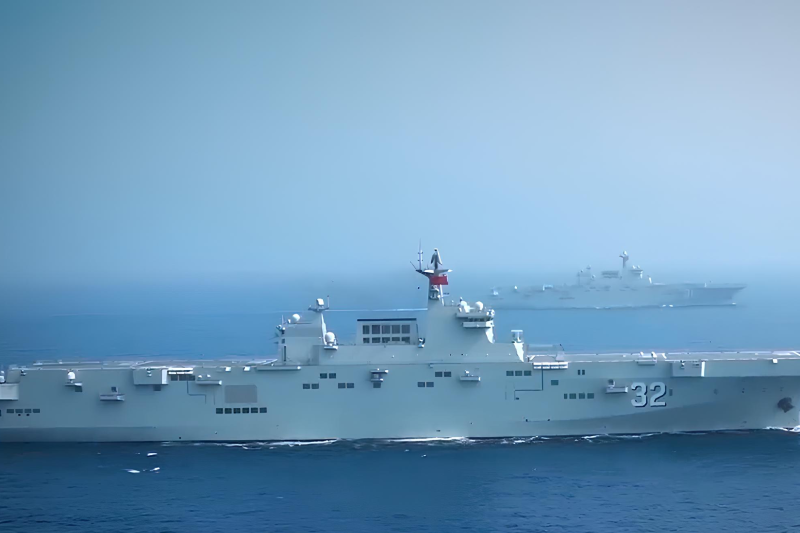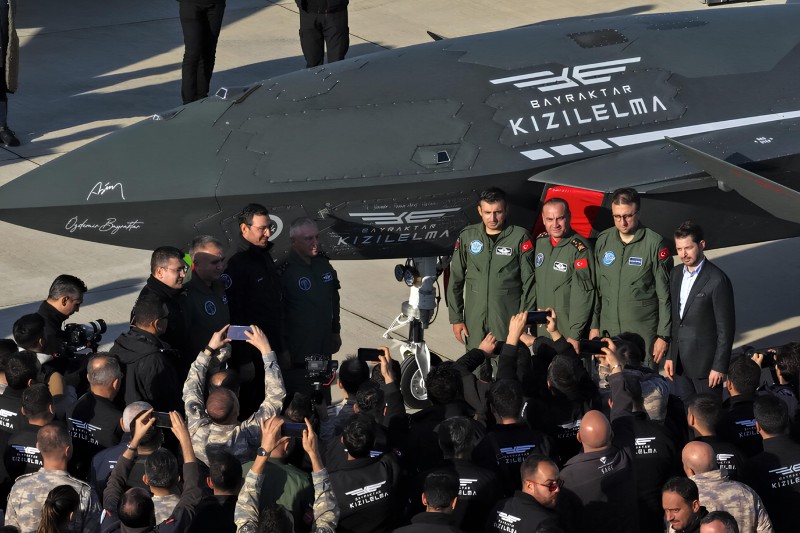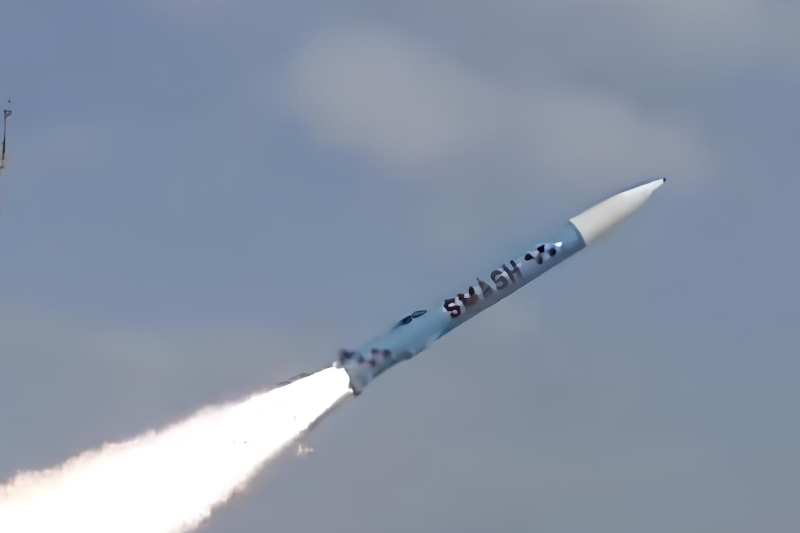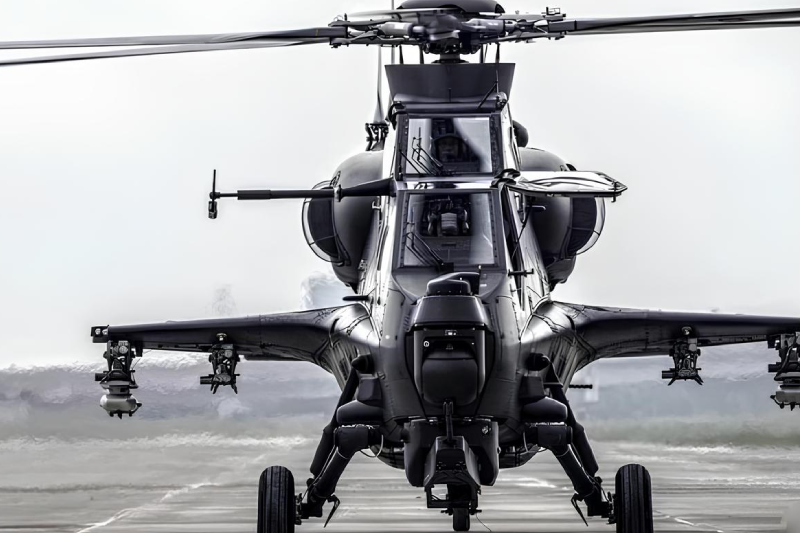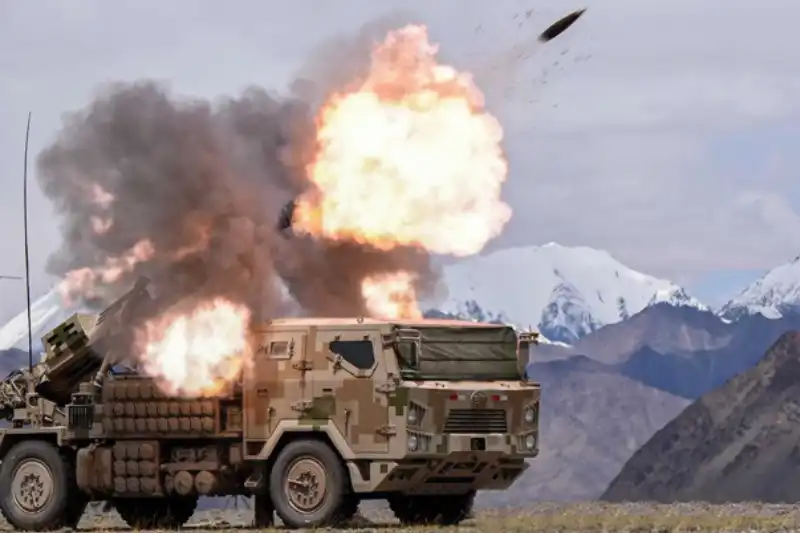China Deploys Advanced Howitzers for High-Altitude Precision Strikes
China recently conducted a live-fire artillery exercise at high altitude using the PCL-181 155mm wheeled self-propelled howitzer, demonstrating advanced military capabilities in challenging mountainous terrain. The drill took place under harsh conditions including thin air, cold weather, and steep slopes, likely in the Tibetan Plateau or Xinjiang region near the Indian border.
The test represents a critical development as traditional artillery often struggles at high altitudes due to distinct lack of oxygen, which impacts both engines and ballistics performance. Such conditions also pose significant logistical challenges to military operations, compounded by the rough terrain and extreme weather conditions.
High-altitude operations require specialized equipment and training to overcome reduced air density, which affects projectile trajectories and engine performance. The successful demonstration of the PCL-181 in these conditions represents a significant technological achievement for Chinese military capabilities.
Developed by Chinese Defense Company NORINCO, the PCL-181 is a modern artillery system introduced in 2019 that fires 155mm NATO-standard shells up to 25 miles (40 km). The howitzer is mounted on a wheeled 6×6 truck rather than a tank-like track system, making it faster, lighter, and more mobile than traditional artillery systems.
The howitzer platform can allegedly travel at speeds exceeding 56 mph (90 kph) with an operational range of more than 373 miles (600 kilometers). The system can carry 27 rounds of ammunition and deliver a firing rate of four to six rounds per minute, supported by a semi-automatic loading mechanism that reduces crew fatigue.
The PCL-181 features sophisticated targeting systems, satellite navigation, digital communications, and auto-loading capabilities that require less manpower while delivering greater precision. These advanced systems enable the howitzer to integrate with modern battlefield networks and coordinate with other military assets.
The weapon system can reposition and fire within three minutes, making it significantly harder for enemy forces to detect and destroy. This rapid deployment capability is crucial in modern warfare scenarios where mobility and survivability are paramount for artillery effectiveness.
According to reports, the PCL-181 is being deployed in strategically important areas including Xinjiang and Tibet, reflecting China’s focus on strengthening military capabilities along contested border regions. These deployments demonstrate China’s commitment to modernizing its artillery forces in critical frontier areas.
The high-altitude testing and deployment represent a significant shift from traditional towed artillery systems that have historically dominated these regions. The PCL-181’s self-propelled capabilities provide substantial advantages in remote mountainous terrain where mobility is essential.
The artillery system’s development and deployment are believed to reflect China’s push to improve military readiness along the India border, especially following the 2020 Galwan Valley clashes. These border tensions highlighted the need for modernized artillery capabilities in high-altitude environments.
The PCL-181’s ability to drive itself into position much faster than traditional systems is crucial in remote or mountainous areas where transportation infrastructure is limited. This mobility advantage provides significant tactical benefits in border region operations.
The PCL-181 represents part of China’s broader strategy to digitize and modernize its military forces, focusing on rapid deployment, precision strikes, coordination with drones and satellite data, and enhanced survivability in contested zones. This integration reflects modern warfare trends toward networked operations.
The system’s digital capabilities enable real-time coordination with other military assets, including unmanned aerial vehicles, satellite surveillance systems, and command and control networks. This integration enhances overall battlefield effectiveness and situational awareness.
The PCL-181’s mobility and rapid deployment capabilities make it suitable for various strategic scenarios beyond border defense. The system can be deployed rapidly to Taiwan, the South China Sea, or Central Asia, providing China with flexible artillery options across multiple theaters.
This versatility reflects China’s strategy of building forces better suited for fast, modern warfighting rather than static defense. The artillery system’s mobility enables rapid response to emerging threats and changing tactical situations.
The PCL-181 serves as both a frontline combat weapon and a strategic deterrent, reflecting China’s comprehensive approach to modern artillery systems. This dual-role capability enhances China’s military flexibility while sending clear signals to potential adversaries about Chinese military capabilities.
The system’s precision and mobility make it effective for both tactical battlefield operations and strategic deterrence missions. This versatility increases the value of the artillery system within China’s overall military strategy.
The PCL-181 represents more than just a new artillery system; it symbolizes China’s military evolution toward high-tech, mobile, and networked warfare capabilities, especially in challenging environments such as the Himalayas. This transformation reflects broader trends in modern military development.
The system’s advanced technology integration demonstrates China’s commitment to developing sophisticated military capabilities that can operate effectively in contested environments. This technological advancement enhances China’s overall military modernization efforts.
Also read this: US Approves HH-60W Helicopter Sale to Norway for $2.6 Billion
The recent high-altitude test served both as technical validation of the PCL-181’s capabilities and as a political signal to regional rivals and international observers. The public demonstration of these capabilities sends clear messages about China’s military modernization progress.
The test demonstrates China’s ability to develop and deploy advanced military systems capable of operating in extreme conditions. This capability validation enhances China’s regional military posture while demonstrating technological achievements.
The PCL-181’s deployment and testing have significant implications for regional security dynamics, particularly along China’s borders with India and other neighboring countries. The system’s capabilities may influence military balance calculations and strategic planning among regional powers.
The artillery system’s advanced capabilities and strategic positioning contribute to evolving security dynamics in the Asia-Pacific region. These developments require careful monitoring and assessment by regional security analysts and military planners worldwide.
Keep connected with us at Facebook, Twitter, YouTube, Instagram & TikTok for the latest defense happening around the globe.
Discover more from International Defence Analysis
Subscribe to get the latest posts sent to your email.



